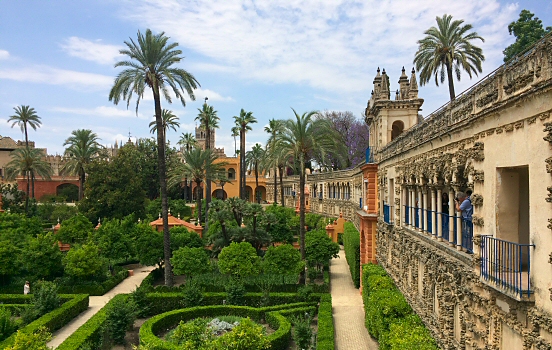 Garden in Alcazar of Seville.
Garden in Alcazar of Seville.
Seville may be the quintessential representation of southern Spain. The city of Carmen, Don Juan and a certain barber. But today I’m roaming the ancient streets in the footsteps of a foreigner. Traces of Christopher Columbus can be found all over Andalusia.
He stayed at Monastery of La Rabida outside Huelva, a bit west of Seville, where he became friends with Queen Isabella’s confessor. His first voyage across the Atlantic ocean sailed from the port of Palos de la Frontera near Huelva, where his house is open for visitors in nearby Puerto de Santa Maria. He then prepared for the voyages in Seville, where many places bear his name.
 The tomb of Columbus.
The tomb of Columbus.
I find myself in front of the tomb of Columbus, located inside the world’s largest Gothic cathedral. Years ago I found the tomb of Vasco da Gama inside the beautiful Mosteiro dos Jerónimos in Lisbon, but the monument to Columbus is of a much grander scale. It’s draped in marble grandeur and hoisted by stone kings.
Explorer? Visionary? Harbinger of hell? Take your pick. But his presence here isn’t an accident. This was his port and launching pad. Seville bankrolled the dream, and the troubles that followed.
Soon, they were all here. Conquistadors and clerics, traders and tyrants. They built this city with blood, belief and blind ambition. Seville of today feels like a smoldering monument to beauty, brutality and the bitter sweetness of a forgotten empire.

Comments
No comments yet.
Leave a reply